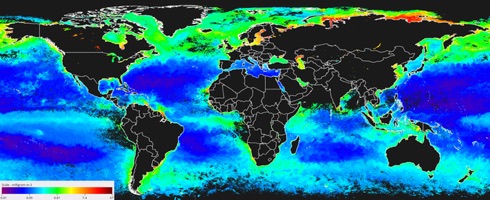Harnessing artificial intelligence for climate science

On 18 September the European Space Agency (ESA) reported that over 700 Earth observation satellites are orbiting our planet, transmitting hundreds of terabytes of data to downlink stations every day. Processing and extracting useful information is a huge data challenge, with volumes rising quasi- exponentially.
The news item from ESA informed that artificial intelligence algorithms – computer systems that learn and act in response to their environment – can improve detection rates in Earth observation. For example, it is common to use the ‘random forests’ algorithm, which uses a training dataset to learn to detect different land-cover types or areas burnt by wildfires. In machine learning, computer algorithms are trained, in the statistical sense, to split, sort and transform data to improve dataset classification, prediction, or pattern discovery.
